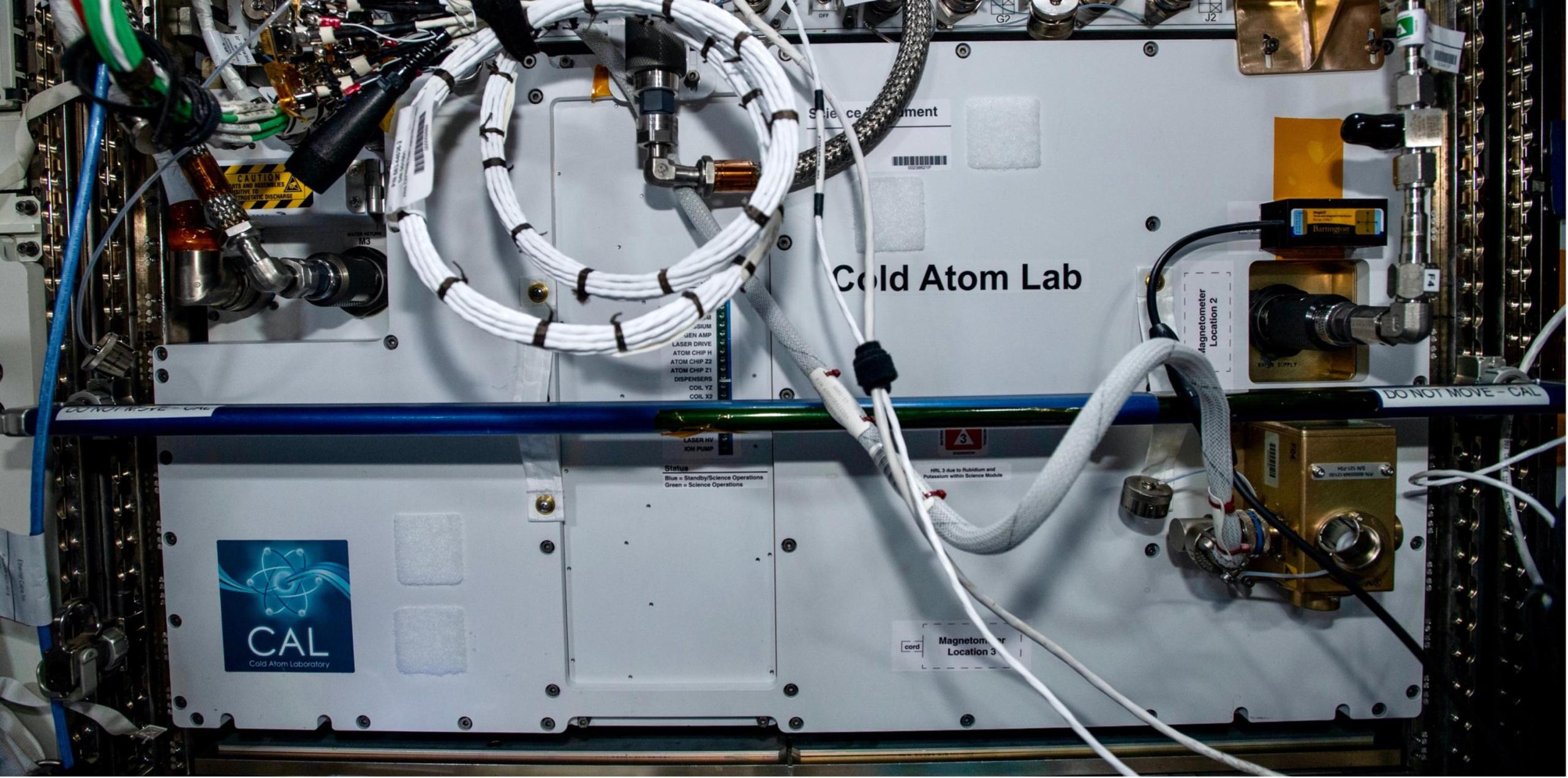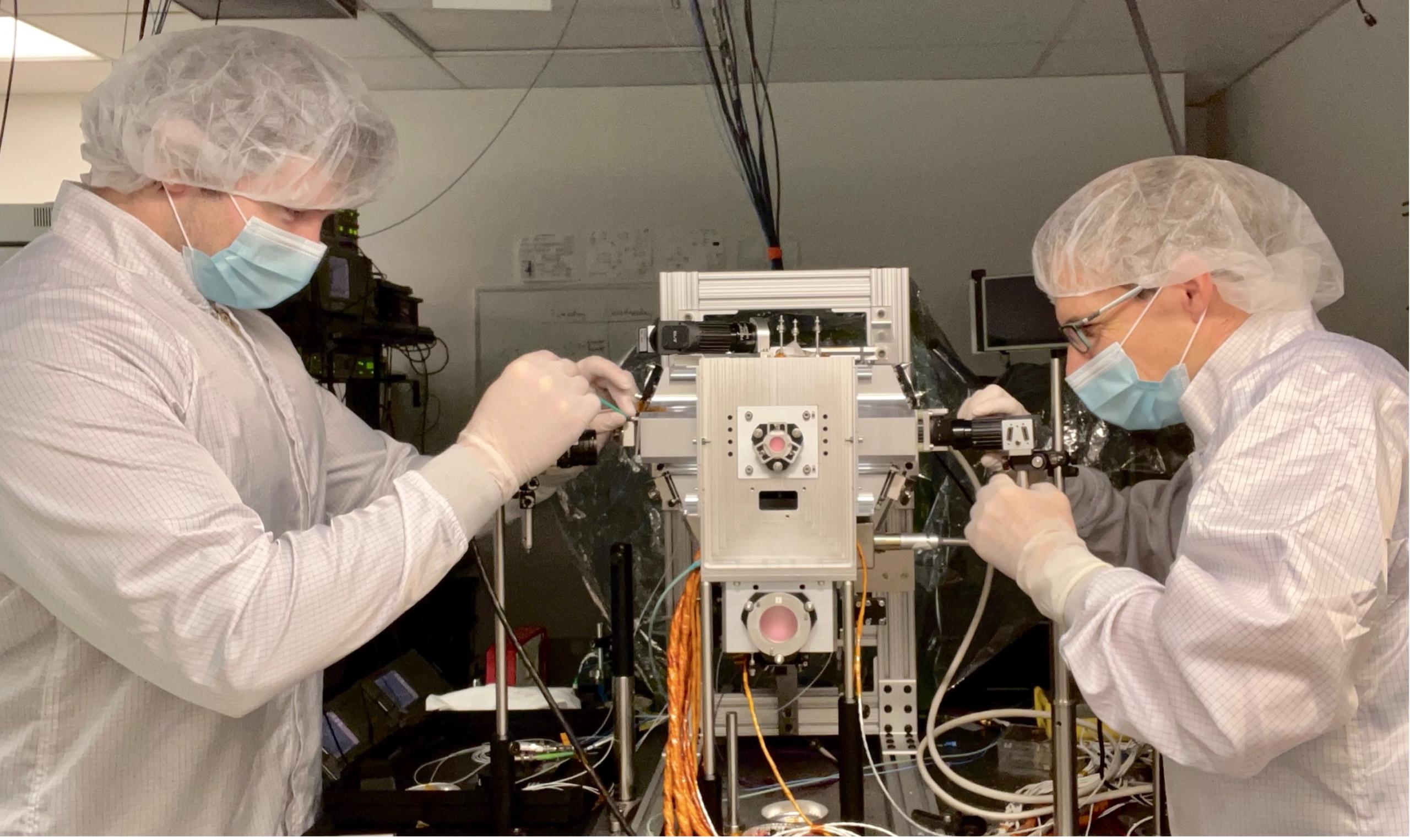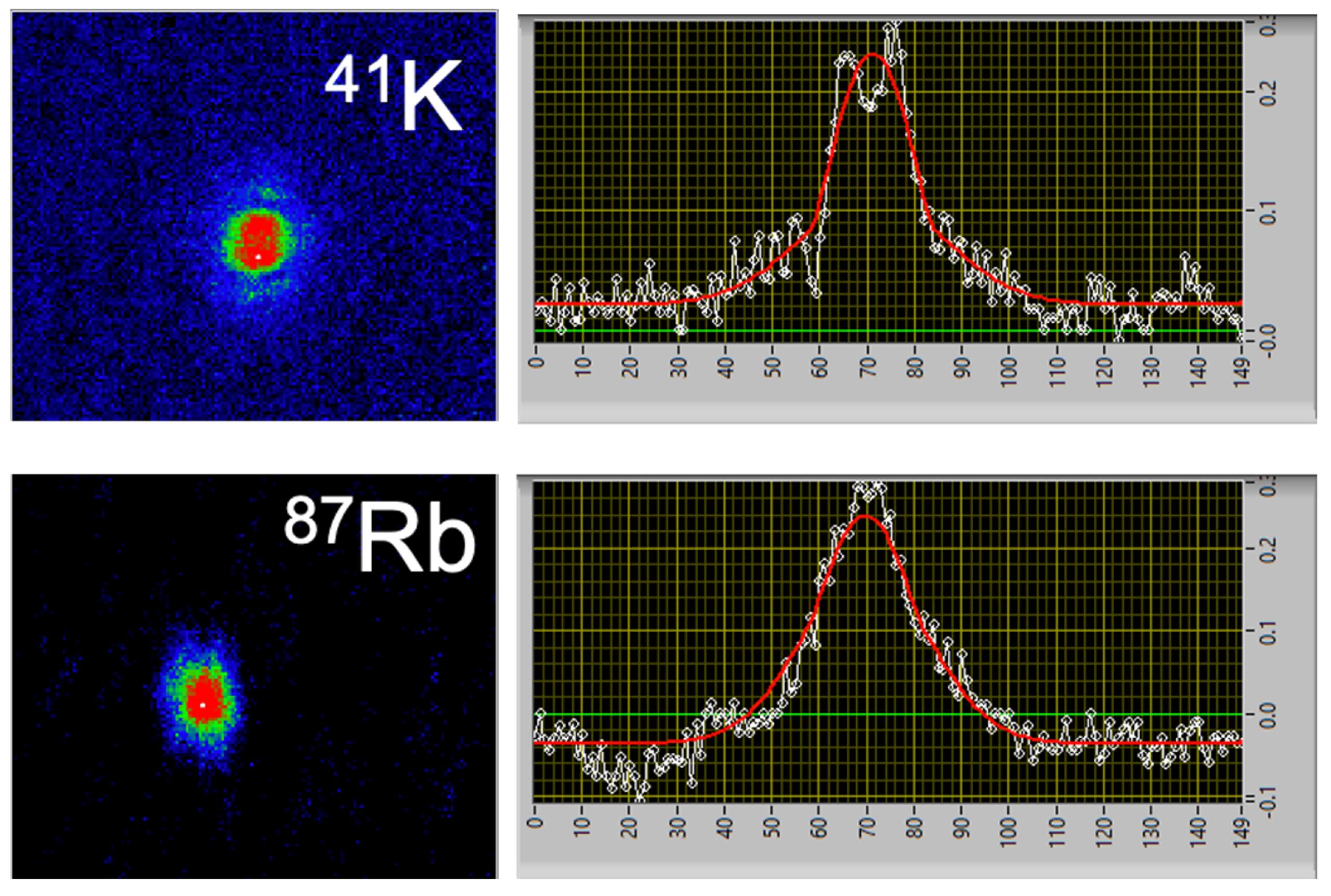Cold Atom Lab (CAL)
Two species of quantum gases have been created to coexist and interact for the first time in space. Accessing resonant interactions among these gases will allow scientists to explore few-body physics, quantum chemistry, and fundamental physics in novel energy regimes—without the perturbing force of gravity, since these experiments will be conducted on the International Space Station.

Ultracold atomic gases provide a unique tool for exploring the quantum nature of matter and for probing the foundations of modern physics. Researchers with NASA’s Cold Atom Lab (CAL) have now simultaneously produced gases of two atomic species (rubidium and potassium) in a uniquely quantum (wave-like) phase of matter called a Bose-Einstein condensate (BEC) for the first time in space. CAL scientists are using the unique microgravity environment onboard the International Space Station to study interactions, molecule formation, and the emergence of structure and complexity in these coexisting dual-species gases at unprecedented low temperatures, for long times in free fall, and specifically in the absence of the perturbing force of gravity.
The experimental realization of an exotic fifth state of matter exhibiting macroscopic quantum behaviors ignited the modern-day use of ultracold atoms as the workhorse of experimental quantum physics. This so-called Bose-Einstein condensate (BEC) was first reported in 1995 by the team of Eric Cornell and Carl Wieman at the Joint Institute for Laboratory Astrophysics (JILA), who jointly shared the Nobel prize with Wolfgang Ketterle from the Massachusetts Institute of Technology in 2001 for this discovery. The JILA team created a BEC by cooling a gas of rubidium atoms to within a few hundred nanoKelvins, which is a small fraction of a degree above absolute zero, and observing the phase transition from thermal to quantum matter as a high-density peak building up in the center of the gas.
Building on this discovery, scientists have made numerous useful discoveries and scientific advancements ranging from studies of swirling vortices and superfluid behaviors, to capitalizing on the direct observation of the wave-like nature of matter, to the development of ultra-precise quantum sensors and atomic clocks. Advancements in this field have grown rapidly, thanks in large part to the diversity of additional atomic species that can be cooled to form a BEC. Notably, the ability to simultaneously produce and co-locate quantum gases of different atomic species enabled the ability to explore resonantly interacting gases and the growth of complexity at a fundamental level.

The Cold Atom Lab launched to the International Space Station in May 2018, and has been operating since that time as the world’s first multi-user facility for the study of ultra-cold atoms in space. For the first three years of operation, an international group of CAL scientists produced and explored BECs on a daily basis in the unique microgravity environment of the space station to demonstrate novel techniques to cool and control quantum gases, to explore the physics of ultracold gases in bubble geometries, to measure the dynamics of quantum gases over 1 second of free-fall, and to demonstrate matter-wave interference, all using a single atomic species – rubidium-87.
CAL has now simultaneously produced BECs of two atomic species (rubidium and potassium) for the first time in space (see Figure 2). This effort was enabled by an on-orbit repair and replacement of a critical microwave frequency driver by astronaut Megan McArthur in 2021, which allowed potassium to be produced at ultracold temperatures in CAL. Since this successful repair, CAL scientists have been concentrating on methods to simultaneously cool the gases to the BEC state. The dual-species BEC was achieved through “sympathetic cooling” of potassium via thermal contact with a directly evaporated ultracold rubidium gas. Using this technique, mixtures of either rubidium-87 and potassium-39 or rubidium-87 and potassium-41 can be regularly produced for study in the flight instrument.
"CAL’s recent success in making ultracold potassium clouds available for experimentation is a great leap forward,” said Washington State University Professor Peter Engels, a CAL Co-Principal Investigator for few-body physics studies onboard the International Space Station. “Potassium atoms provide us with the opportunity to change the interactions between the atoms at will. CAL’s recent achievement will open up many new opportunities for research with CAL, from fundamental studies of few-body physics to demonstrations of quantum device concepts and developing strategies for future missions.”

CAL is now the first and only quantum gas experiment in space with multiple atomic species available for study. By broadening the spectrum of quantum gases produced in space, experiments are now planned to create ultracold molecules, exotic states of matter, and enable high-precision tests of Einstein’s equivalence principle with quantum matter.
“The possibilities are outstanding,” said University of Rochester Professor Nicholas Bigelow, who is a CAL Principal Investigator studying dual-species atom interferometry in orbit. “We can now move to tests of some of the most fundamental ideas of physics while also taking steps toward realizing sophisticated new quantum technologies for navigation and planetary exploration including studies of our own planet, Earth.”
This research was carried out at the Jet Propulsion Laboratory, California Institute of Technology, under a contract with the National Aeronautics and Space Administration. Images courtesy of NASA/JPL-Caltech. Designed and built at JPL, Cold Atom Lab is sponsored by the Biological and Physical Sciences (BPS) Division of NASA's Science Mission Directorate at the Agency's headquarters in Washington DC and the International Space Station Program at NASA's Johnson Space Center in Houston, Texas.
Learn more about Cold Atom Lab at https://www.jpl.nasa.gov/missions/cold-atom-laboratory-cal
Just how cold are the atoms in Cold Atom Lab? Find out at https://www.jpl.nasa.gov/news/news.php?feature=7311
To learn more about the Cold Atom Lab’s recent upgrades visit:
https://www.jpl.nasa.gov/news/upgrading-the-space-stations-cold-atom-lab-with-mixed-reality
https://www.jpl.nasa.gov/news/news.php?feature=7660
Kamal Oudrhiri, Jet Propulsion Laboratory, California Institute of Technology
Biological and Physical Sciences Division (BPS)
Read more Technology Highlights
